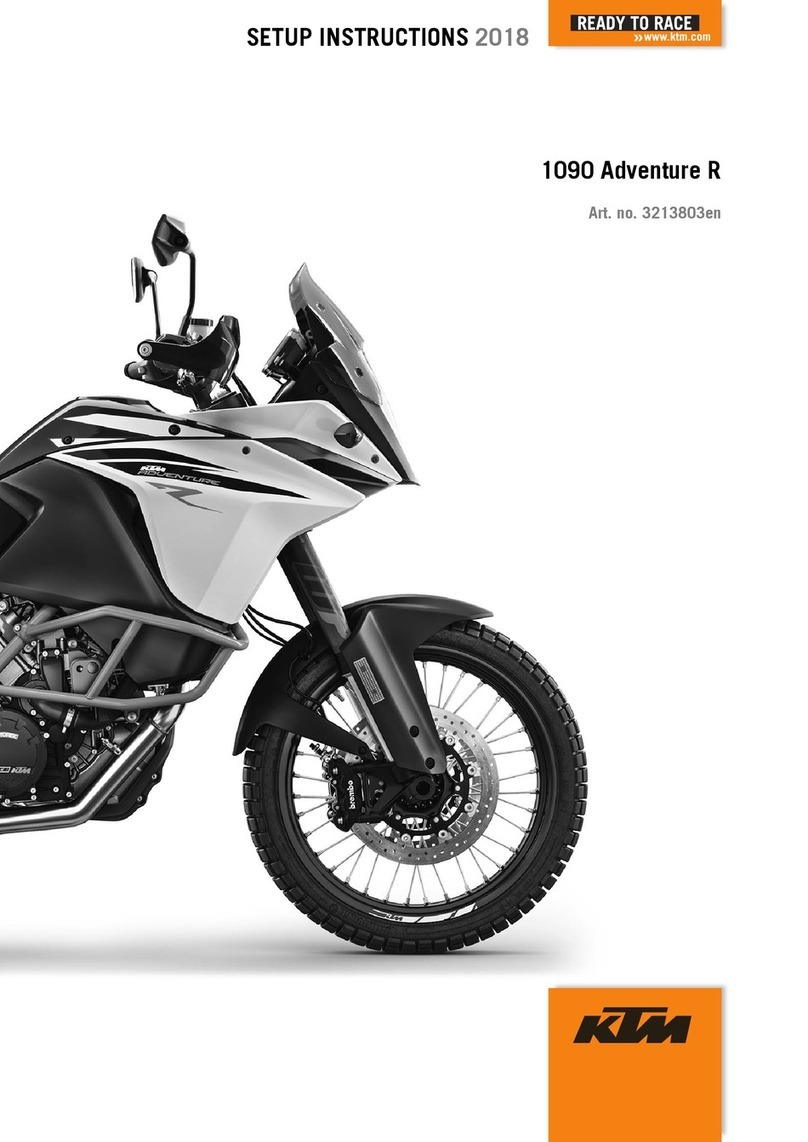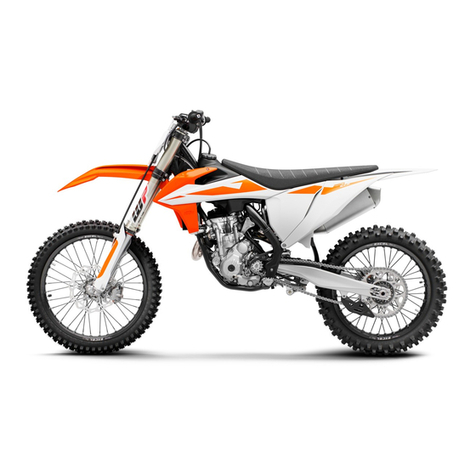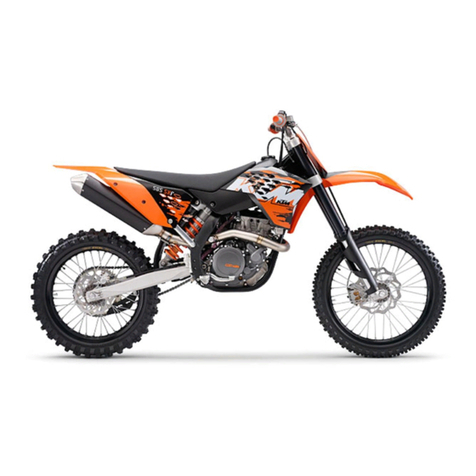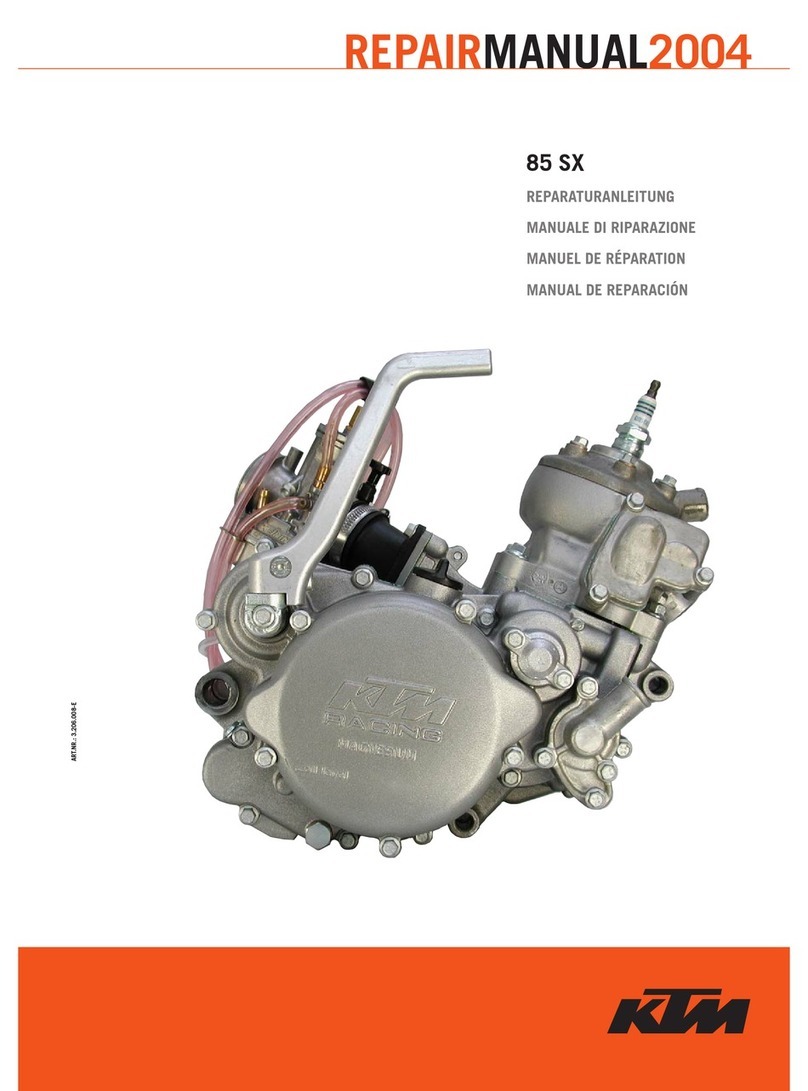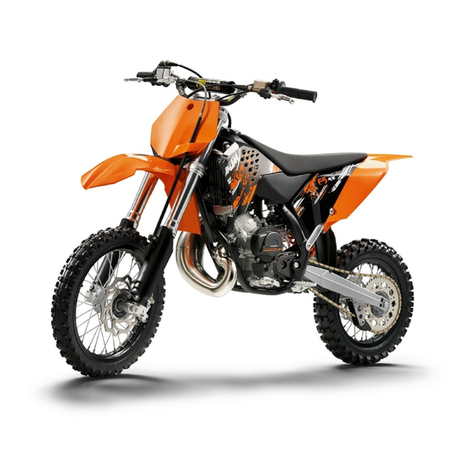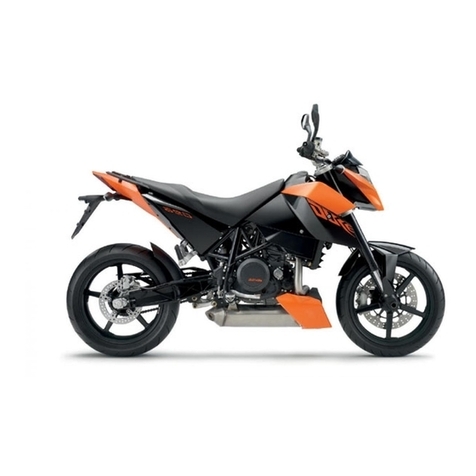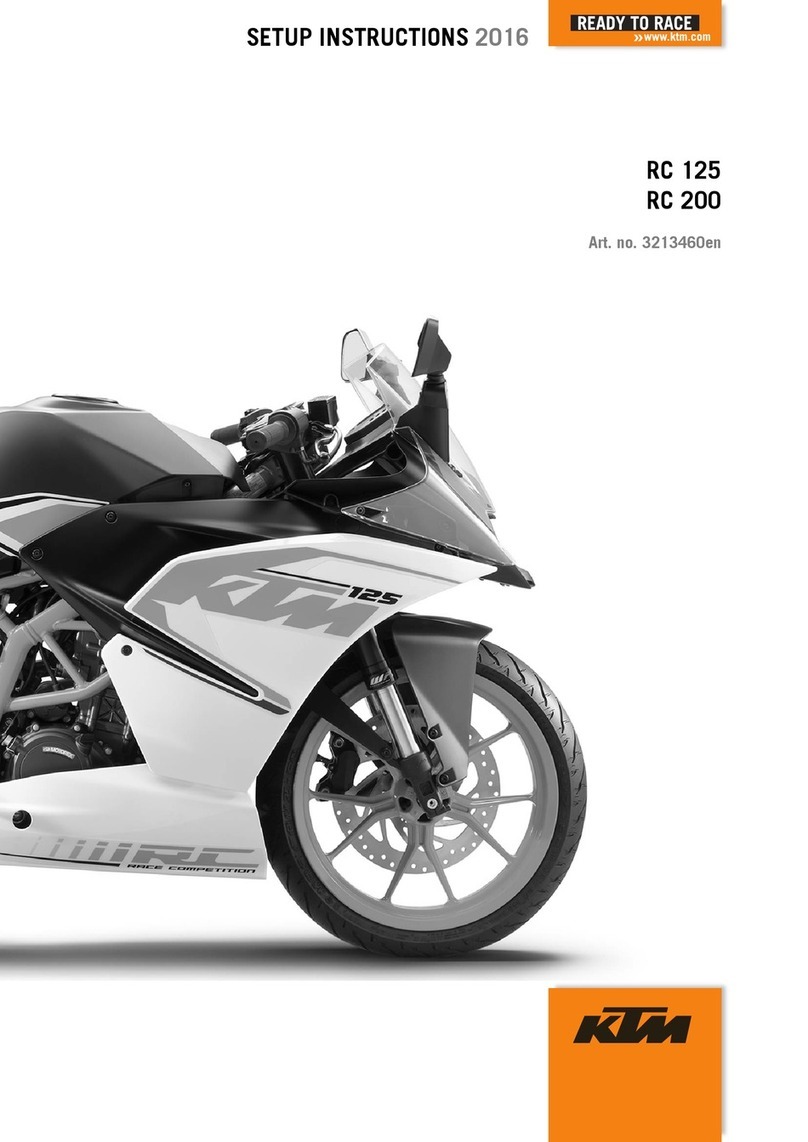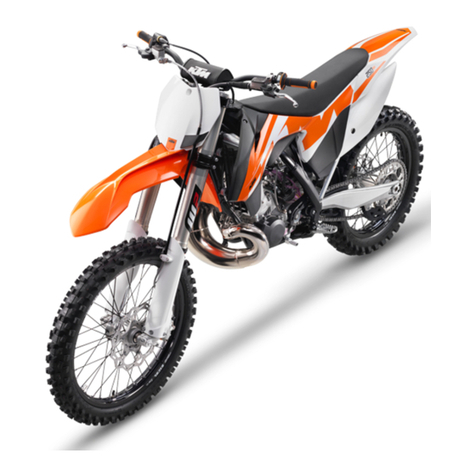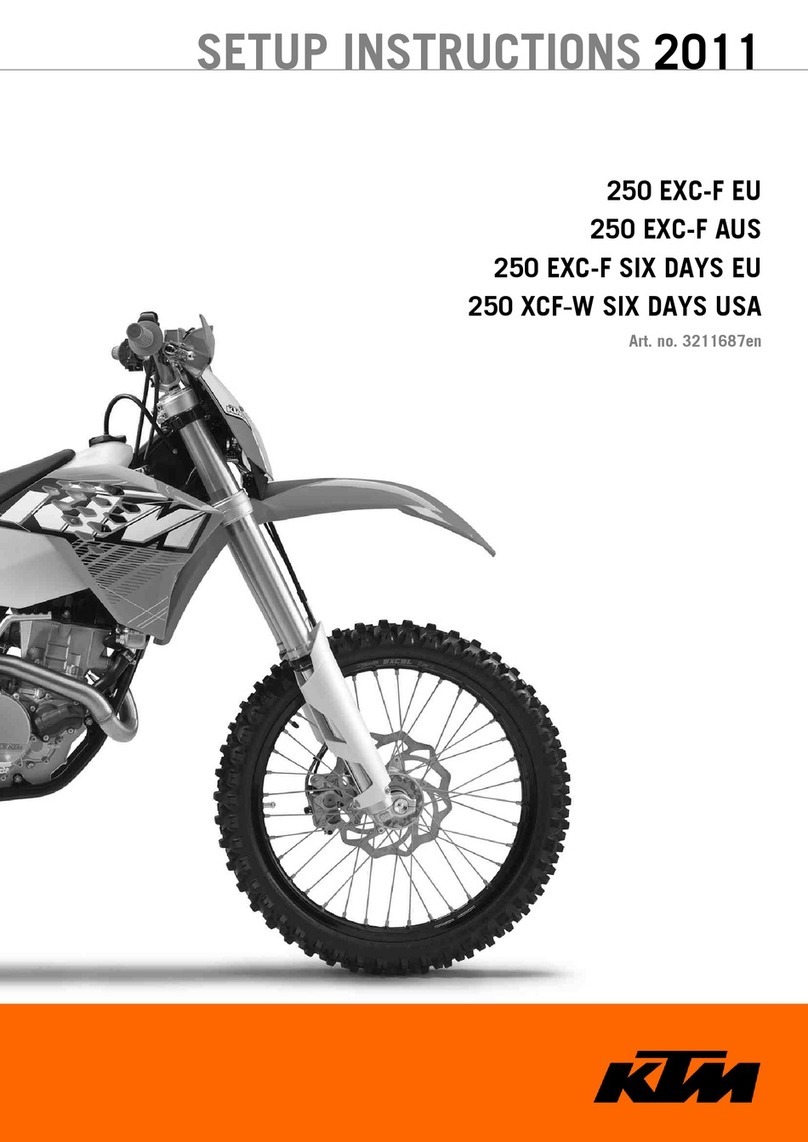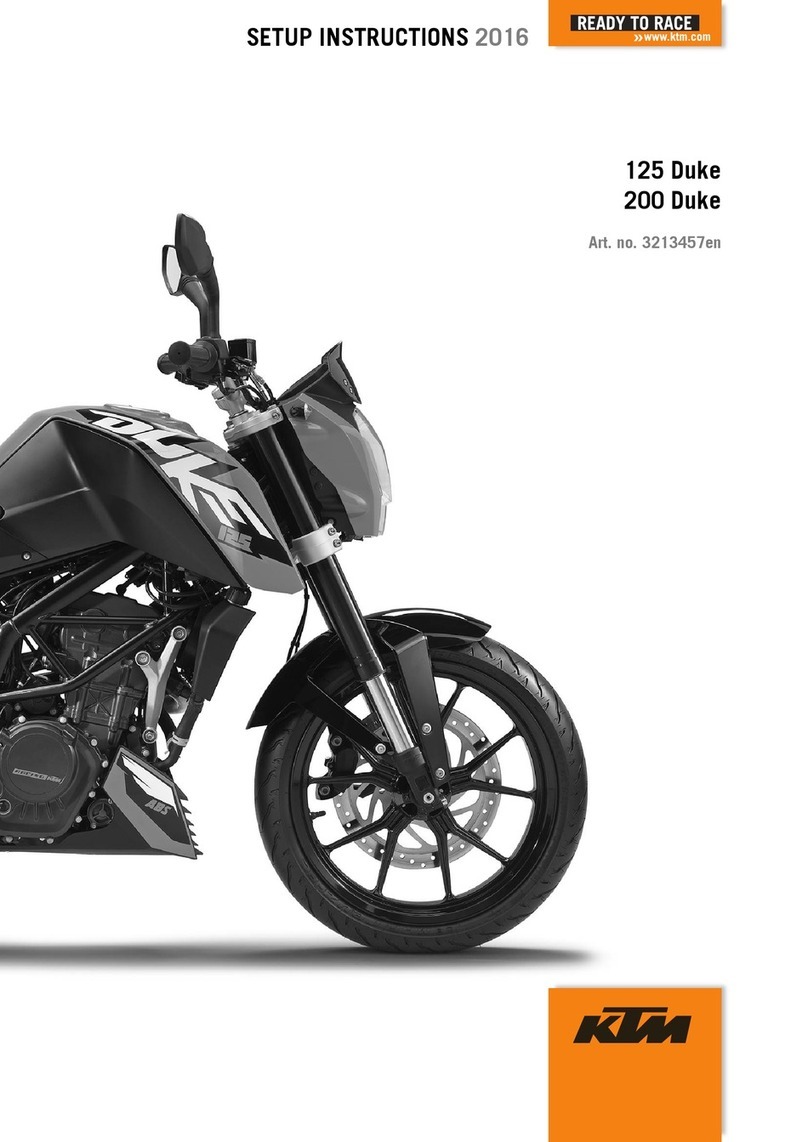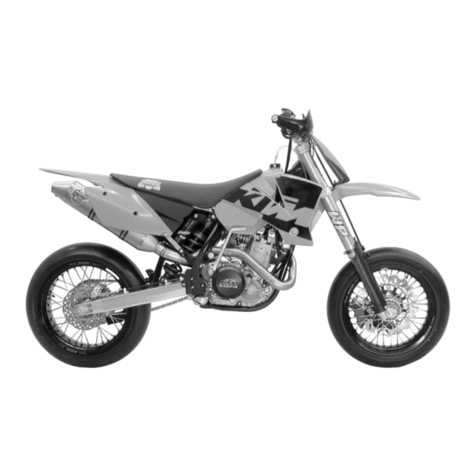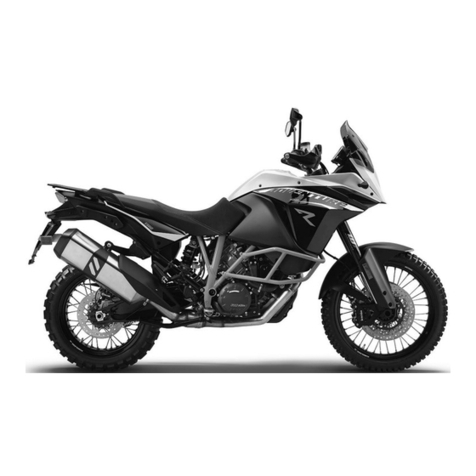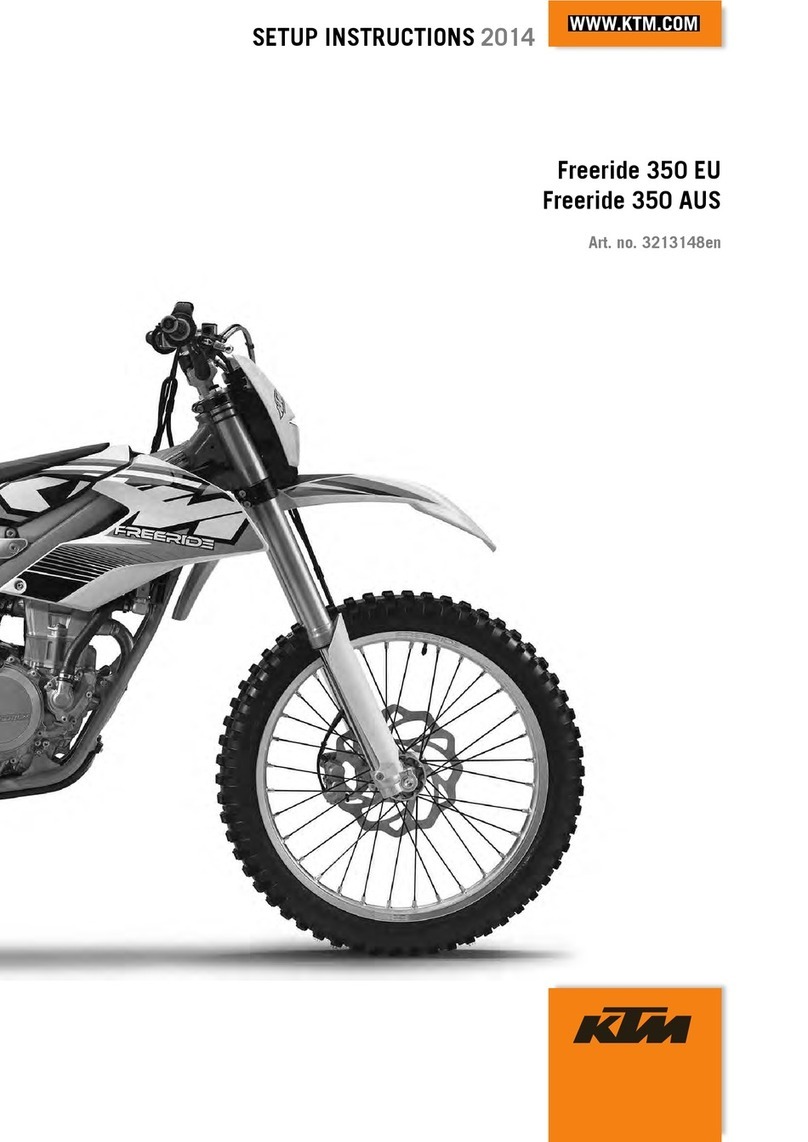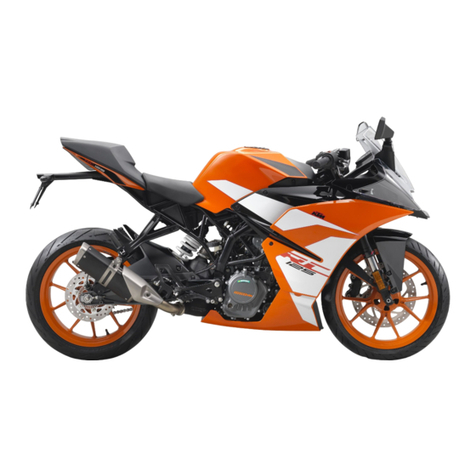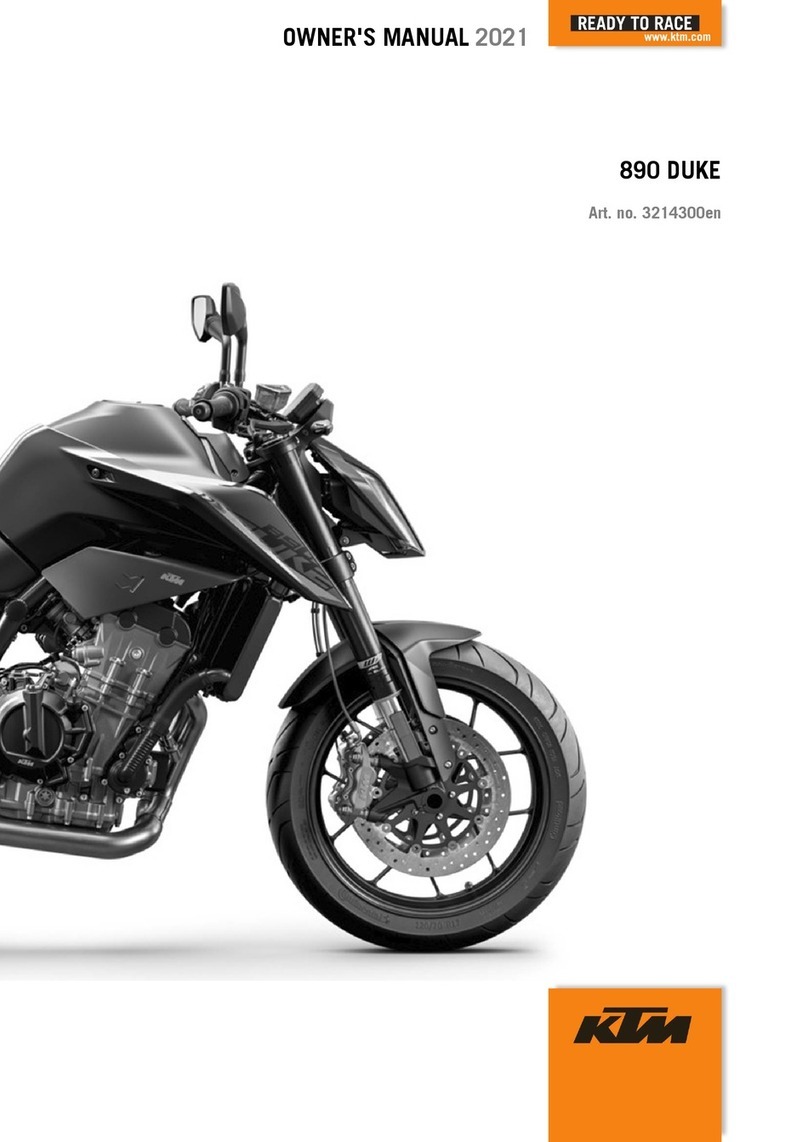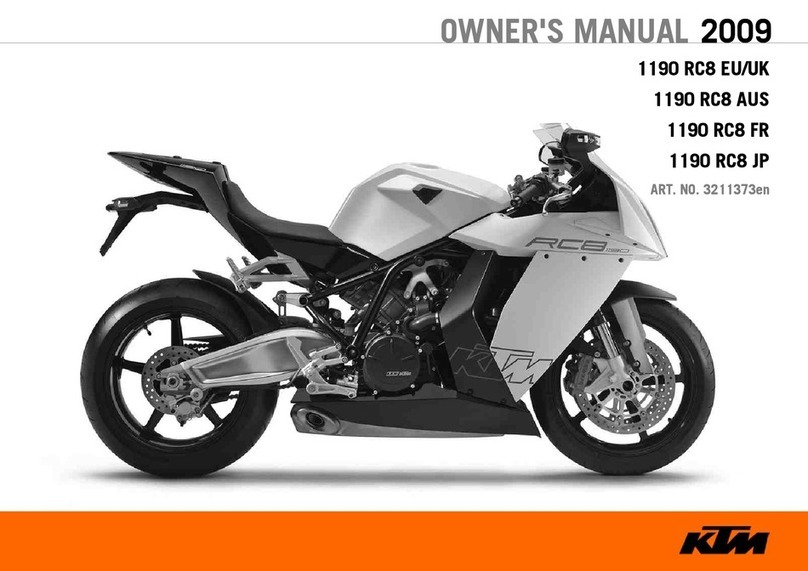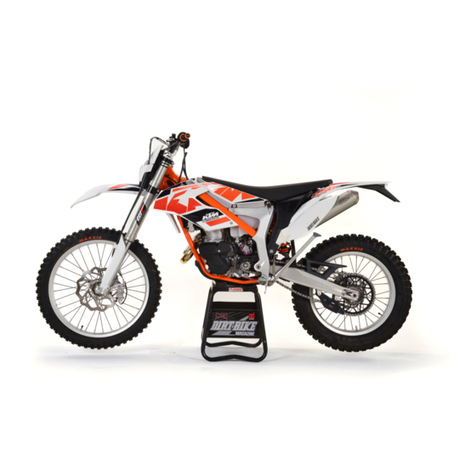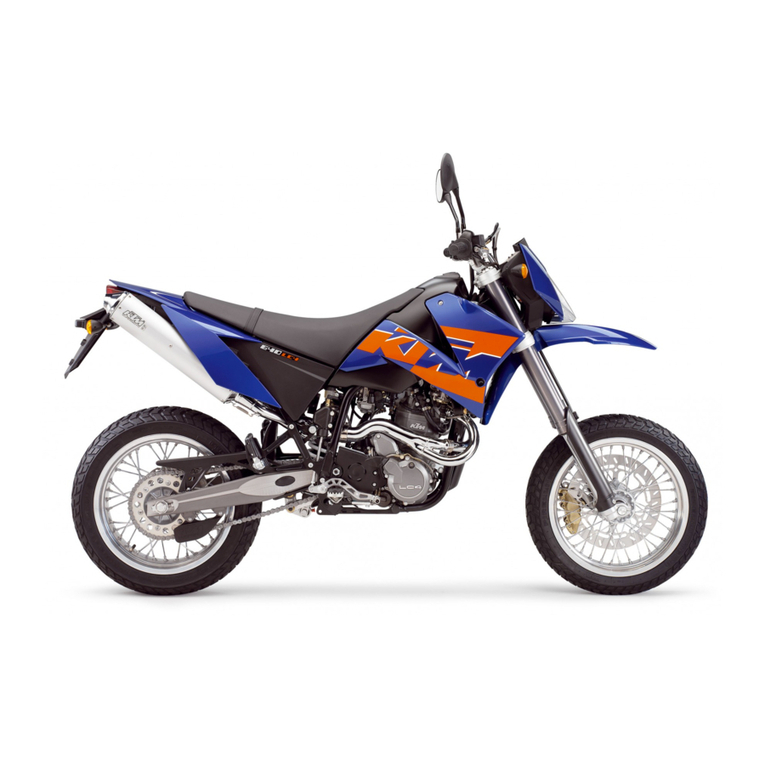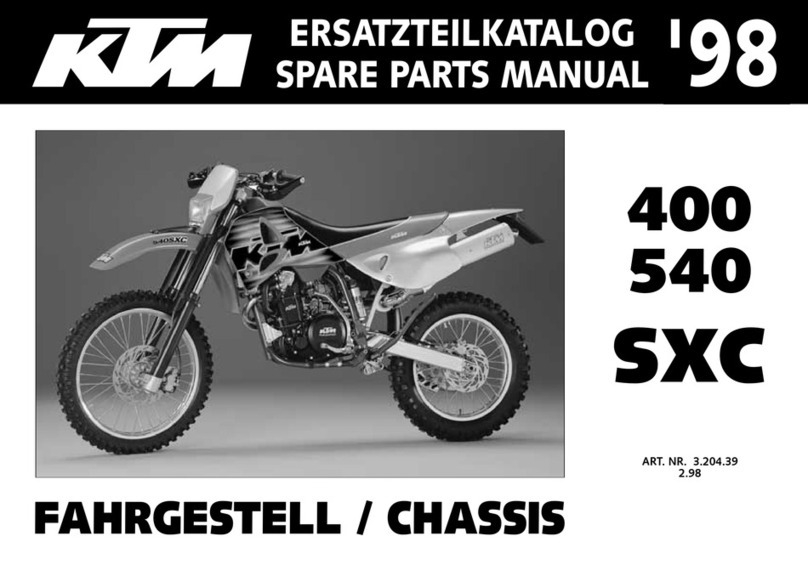ENGLISH
4
INDEX »
Page
SERIAL NUMBER LOCATIONS . . . . . . . . . . . . . . . . . . . .5
Chassis number . . . . . . . . . . . . . . . . . . . . . . . . . . . .5
Engine number, engine type . . . . . . . . . . . . . . . . . . . .5
OPERATION INSTRUMENTS . . . . . . . . . . . . . . . . . . . . .5
Clutch lever . . . . . . . . . . . . . . . . . . . . . . . . . . . . . . .5
Hand decompression lever . . . . . . . . . . . . . . . . . . . . .5
Hand brake lever . . . . . . . . . . . . . . . . . . . . . . . . . . . .6
Choke lever . . . . . . . . . . . . . . . . . . . . . . . . . . . . . . . .6
Ignition lock . . . . . . . . . . . . . . . . . . . . . . . . . . . . . . .6
Socket for electric accessories . . . . . . . . . . . . . . . . . .6
Multi-functional digital speedometer . . . . . . . . . . . . . .7
Display . . . . . . . . . . . . . . . . . . . . . . . . . . . . . . . . . . .7
Setting options in the display . . . . . . . . . . . . . . . . . . .8
Cooling liquid temperature display . . . . . . . . . . . . . . .9
Indicator lamps . . . . . . . . . . . . . . . . . . . . . . . . . . . . .9
Tachometer . . . . . . . . . . . . . . . . . . . . . . . . . . . . . . . .9
Combination switch . . . . . . . . . . . . . . . . . . . . . . . . .10
Starter tip switch, emergency OFF tip switch, light switch
. .10
Filler cap . . . . . . . . . . . . . . . . . . . . . . . . . . . . . . . .10
Fuel taps . . . . . . . . . . . . . . . . . . . . . . . . . . . . . . . .10
Shift lever . . . . . . . . . . . . . . . . . . . . . . . . . . . . . . .11
Kickstarter . . . . . . . . . . . . . . . . . . . . . . . . . . . . . . .11
Foot brake pedal . . . . . . . . . . . . . . . . . . . . . . . . . . .11
Compression damping of fork . . . . . . . . . . . . . . . . . .12
Rebound damping of fork . . . . . . . . . . . . . . . . . . . .12
Compression damping of shock absorber . . . . . . . . . .12
Rebound damping of shock absorber . . . . . . . . . . . .12
Baggage carrier / Grips . . . . . . . . . . . . . . . . . . . . . .13
Footrests . . . . . . . . . . . . . . . . . . . . . . . . . . . . . . . .13
GENERAL TIPS AND WARNINGS FOR STARTING
THE MOTORCYCLE . . . . . . . . . . . . . . . . . . . . . . . . . . .14
Instructions for initial operation . . . . . . . . . . . . . . . .14
Running in . . . . . . . . . . . . . . . . . . . . . . . . . . . . . . .14
DRIVING INSTRUCTIONS . . . . . . . . . . . . . . . . . . . . . .15
Check the following before each start . . . . . . . . . . . .15
Starting when the engine is cold . . . . . . . . . . . . . . .16
Starting when the engine is warm or hot . . . . . . . . . .17
What to do when the engine is „flooded” . . . . . . . . .17
Starting the engine with the kickstarter . . . . . . . . . . .17
Starting off . . . . . . . . . . . . . . . . . . . . . . . . . . . . . . .17
Shifting/Riding . . . . . . . . . . . . . . . . . . . . . . . . . . . .17
Braking . . . . . . . . . . . . . . . . . . . . . . . . . . . . . . . . .18
Stopping and parking . . . . . . . . . . . . . . . . . . . . . . .18
Refueling . . . . . . . . . . . . . . . . . . . . . . . . . . . . . . . .19
Activating the ignition curve for low-octane fuel . . . . .19
PERIODIC MAINTENANCE SCHEDULE . . . . . . . . . . . . .20
MAINTENANCE WORK ON CHASSIS AND ENGINE . . . .22
Tool set . . . . . . . . . . . . . . . . . . . . . . . . . . . . . . . . .22
Removing the seat . . . . . . . . . . . . . . . . . . . . . . . . . .22
Checking and adjusting steering head bearing . . . . . .23
Bleeder screw front fork . . . . . . . . . . . . . . . . . . . . . .23
Cleaning the dust sleeves of the telescopic fork . . . . .23
Changing the spring preload of the shock absorber . . .24
Checking rubber ring on the WP rear shock absorber
. .24
Lubricating the shock absorber linkage . . . . . . . . . . .24
Page
Checking chain tension . . . . . . . . . . . . . . . . . . . . . .25
Correct chain tension . . . . . . . . . . . . . . . . . . . . . . . .25
Chain maintenance . . . . . . . . . . . . . . . . . . . . . . . . .26
Chain wear . . . . . . . . . . . . . . . . . . . . . . . . . . . . . . .26
General informations about KTM disc brakes . . . . . . .27
Adjusting of free travel at the hand brake lever . . . . .28
Checking of brake fluid level - front brake . . . . . . . . .28
Refilling the front brake fluid reservoir . . . . . . . . . . .28
Checking the front brake pads . . . . . . . . . . . . . . . . .28
Changing the basic position of the brake pedal . . . . .29
Checking rear brake fluid level . . . . . . . . . . . . . . . . .29
Refilling the rear brake fluid reservoir . . . . . . . . . . . .29
Checking the rear brake pads . . . . . . . . . . . . . . . . .29
Dismounting and mounting the front wheel . . . . . . . .30
Dismounting and mounting the rear wheel . . . . . . . . .31
Checking the shock absorption rubbers in the rear hub
. .31
Tires, air pressure . . . . . . . . . . . . . . . . . . . . . . . . . .32
Checking spoke tension . . . . . . . . . . . . . . . . . . . . . .32
Changing the wheel size . . . . . . . . . . . . . . . . . . . . .32
Battery . . . . . . . . . . . . . . . . . . . . . . . . . . . . . . . . . .33
Charging the battery . . . . . . . . . . . . . . . . . . . . . . . .33
Fuses . . . . . . . . . . . . . . . . . . . . . . . . . . . . . . . . . . .34
Removing and mounting the headlight mask . . . . . . .34
Replacing the headlight bulb . . . . . . . . . . . . . . . . . .34
Exchanging the brake light and tail light bulb . . . . . .35
Removing the tank . . . . . . . . . . . . . . . . . . . . . . . . .35
Cooling system . . . . . . . . . . . . . . . . . . . . . . . . . . . .36
Checking the cooling liquid level . . . . . . . . . . . . . . .36
Cleaning the air filter . . . . . . . . . . . . . . . . . . . . . . . .37
Changing the original position of the clutch lever . . . .38
Checking the oil level of the hydraulic clutch . . . . . .38
Adjusting the throttle cable . . . . . . . . . . . . . . . . . . .38
Checking and adjusting the choke cable play . . . . . . .39
Checking the adjustment of the hand decompression cable
. .39
Adjust idling speed . . . . . . . . . . . . . . . . . . . . . . . . .39
Draining of float chamber of the carburetor . . . . . . . .40
Engine oil . . . . . . . . . . . . . . . . . . . . . . . . . . . . . . . .40
Checking the engine oil level . . . . . . . . . . . . . . . . . .40
Oil circuit . . . . . . . . . . . . . . . . . . . . . . . . . . . . . . . .41
Oil and screen filter change, bleeding of the oil system
. .41
Changing oil filter . . . . . . . . . . . . . . . . . . . . . . . . . .42
TROUBLE SHOOTING . . . . . . . . . . . . . . . . . . . . . . . . .43
CLEANING . . . . . . . . . . . . . . . . . . . . . . . . . . . . . . . . .46
CONSERVATION FOR WINTER OPERATION . . . . . . . . .46
STORAGE . . . . . . . . . . . . . . . . . . . . . . . . . . . . . . . . . .46
RE-INITIATION AFTER TIME OF STORAGE . . . . . . . . . .46
TECHNICAL SPECIFICATIONS – ENGINE . . . . . . . . . . .48
TECHNICAL SPECIFICATIONS – CHASSIS . . . . . . . . . .50
HEAD WORD INDEX . . . . . . . . . . . . . . . . . . . . . . . . . .52
WIRING DIAGRAM . . . . . . . . . . . . . . . . . . . . . .APPENDIX
